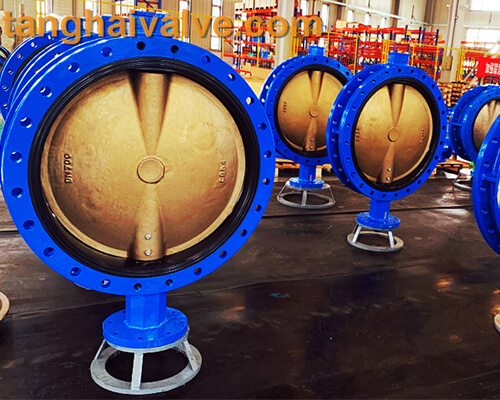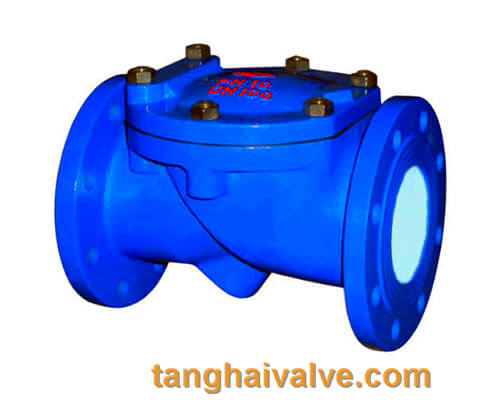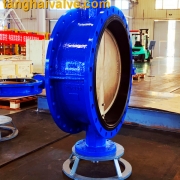The role and classification of valves
Valves have many functions. Different valves should be selected for different functions. Different types of valves have

U-type-flange-butterfly-valve-2
different structures. These functions are all means to effectively control the process and ensure safety. Valves are generally divided into automatic valves and drive valves. Automatic valves (such as safety valves, pressure reducing valves, steam traps, check valves) rely on changes in the pressure of the device or pipeline to achieve the purpose of opening and closing. Driving valves (gate valves, globe valves, ball valves, butterfly valves, etc.) rely on driving devices (manual, electric, hydraulic, pneumatic, etc.) to adjust the pressure, flow and direction of the medium in the pipeline. Due to the different pressure, temperature, flow rate and physical and chemical properties of the medium, the control requirements and use requirements of the device and piping system are also different, so the role of the valve is also different.
Classified by valve function:
Cut-off valve: The cut-off valve is also called a closed-circuit valve. Its function is to connect or cut off the medium in the pipeline. Block valves include gate valves, globe valves, plug valves, ball valves, butterfly valves and diaphragm

8 tilting-disc-swing-check-valve-3
valves.
Regulating valve: Regulating valves include regulating valves, throttle valves and pressure reducing valves, whose function is to regulate the pressure and flow of the medium.
Check valve: Check valve is also called one-way valve or check valve, its function is to prevent the medium in the pipeline from flowing back. The bottom valve of the pump to close the water is also a check valve.
Safety valve: The function of safety valves is to prevent the pressure of the medium in the pipeline or device from exceeding the specified value, so as to achieve the purpose of safety protection.
Diversion valve: Diversion valves include various distribution valves and traps, etc., whose function is to distribute, separate or mix the medium in the pipeline.
Exhaust valve: Exhaust valve is an indispensable auxiliary component in the pipeline system. It is often installed at high points or elbows to remove excess gas in the pipeline, improve the efficiency of pipeline use and reduce energy consumption.
The role of the valve: (cut-off, adjustment, check, safety)
1. Cut-off function An important function of the valve is the cut-off function. It is to cut off (shut off) the fluid in the pipeline to prevent it from circulating. Generally, the valves of various pipelines mainly play a cut-off role. To
2. Regulation function Another important function of the valve is to adjust the flow rate. According to the working conditions or use requirements, adjust the media flow, temperature, pressure, liquid level and other parameters in the pipeline. The control of this flow depends on the valve opening. To adjust the size of the degree. [Electric regulating ball valve Electric regulating butterfly valve Pneumatic regulating ball valve Pneumatic regulating butterfly valve]
3. Non-reverse function Some pipelines require the medium to flow in one direction, and no reverse flow or backflow is allowed. This requires the use of non-reverse valves (or one-way valves). It refers to a valve that automatically opens and closes the valve flaps depending on the flow of the medium itself to prevent the medium from flowing back. It is an automatic valve. Its main function is to prevent the medium from flowing back, prevent the pump and drive motor from reversing, and the container medium. put.
4. Safety function In order to prevent explosion accidents when the fluid pressure in the high-pressure container exceeds the pressure limit of the container when the pressure is too high, a valve that can automatically release pressure at a certain pressure is installed on the container, which is generally called a safety valve. For example, boilers, compressed air storage tanks and some high-pressure reactors are equipped with safety valves. This valve plays a role in ensuring safety.
5. Other functions In addition to the above four functions, the valve also has some functions, such as stabilizing the pressure of the system; reducing the high pressure in front of the valve to a lower pressure reducing effect, and releasing the pressure by venting to discharge sewage The function of sewage discharge; the sampling function of sampling for analysis and observation; and the backflow function of returning part of the fluid to the previous process. There are also steering valves (three-way valve, four-way valve, etc.) that transfer fluid to another pipeline.
TH Valve is a professional manufacturer of butterfly valve, gate valve, check valve, globe valve, knife gate valve, ball valve with API, JIS, DIN standard, used in Oil, Gas, Marine industry, Water supply and drainage, fire fighting, shipbuilding, water treatment and other systems, with Nominal Diameter of DN50 to DN1200, NBR/EPDM/VITON, Certificates & Approvals: DNV-GL, Lloyds, DNV, BV, API, ABS, CCS. Standards: EN 593, API609, API6D
related news /knowledge: The difference between globe valve and check valve; The matching function and principle of pneumatic valve accessories;

 tanghaivalve.com
tanghaivalve.com 

 © Copyright 2020 Tianjin Tanghaidongyang Valve Co., Ltd. All Rights Reserved.
© Copyright 2020 Tianjin Tanghaidongyang Valve Co., Ltd. All Rights Reserved.